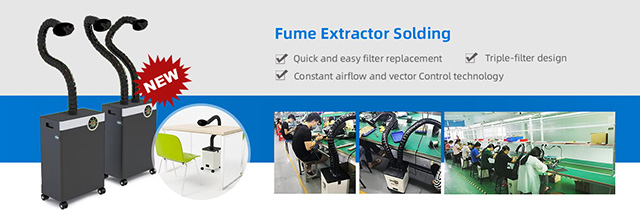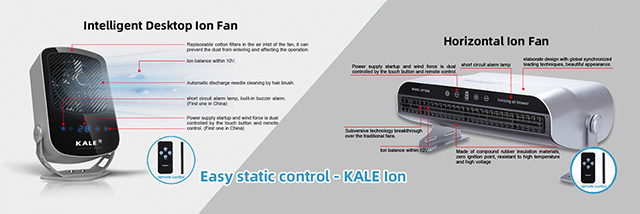Do you know the four basic elements of a clean room in a clean room?
Source:本站 Time:2008/7/29 0:00:00 frequency:
The biggest source of pollution in a clean room is the human body itself. Therefore, to maintain the clean room environment, the human body that requires movement in the clean room must wear a qualified clean clothing. What kind of clean clothes are considered qualified dust-free clothes? Clean clothing for different levels of clean rooms must have four basic elements: clean performance, electrostatic performance, durability and comfort.
First, clean performance
To evaluate the clean performance of clean clothes, it is necessary to start from the two aspects of dust-free and dust-free, and it is not appropriate to equate dust-free with clean.
1. Dust-free: Dust-free refers to the fact that the garment itself does not dust, which requires clean clothes to choose fabrics and accessories that are not dusty during production and design, and to reduce dust and accumulation of clothing in cutting, sewing and style design. The possibility of dust. With simple tools, you can judge whether the clean clothes have dust-free performance from the following aspects:
2. Dust collection: Another important indicator of the clean performance of clean clothes - the dust filter rate, also known as dust capture rate in Japan, refers to the effect of dust-free clothing blocking the outward diffusion of human particles. To judge the dust filter of clean clothes, you can start from the following aspects:
Second, the electrostatic properties
In addition to the sensitivity requirements of the product itself to static electricity, most clean rooms require the environment to be in constant temperature and humidity conditions for a long time, and the static electricity generated in the clean room is more difficult to eliminate. The electrostatic control performance of the clean clothes is particularly important. There are two main ways to ensure the electrostatic performance of clean clothes. One is to choose a fabric with good antistatic performance, and the other is to ensure the electrical connectivity of the garment as a whole, and it is well grounded when worn. Evaluate the antistatic properties of clean clothes from the following aspects:
1. Check the anti-static in the fabric: There are usually three anti-static methods for the fabric: 1 fabric with antistatic finishing agent for finishing; 2 for fiber grafting modification, hydrophilic fiber for the purpose of improving fabric moisture absorption Blended and interwoven; 3 blended or woven antistatic fibers. The mechanism of action of the first two methods belongs to improving the moisture regain and hydrophilicity of the fabric and reducing the insulation to accelerate the electrostatic leakage. Therefore, in a dry environment or after repeated washing, the effect is not durable or insignificant, generally only It is applied to fabrics for general clothing. Only the third method can solve the static problem of textiles permanently and efficiently, so it is widely used in the production of anti-static overalls.
The anti-static fiber resistance, the amount of addition and the way of adding determine the anti-static properties of the fabric. In the case where the area is constant, the greater the amount of antistatic fiber added, the better the antistatic property of the fabric. Different amounts of fabric can be selected according to the electrostatic sensitivity level of the clean room.
Antistatic fibers are generally black or gray, so the appearance of the embedded antistatic fibers is generally black stripes or lattices. The inspection method is to cut the fabric along the edge of the black conductive fiber with scissors, and separate the black conductive fiber, and use a magnifying glass to observe whether one or a few relatively thick fibers are used, and measure the separation with a surface resistance tester. The electrical resistance of the conductive fibers. A few pieces are continuously removed, and it can be basically judged whether each black wire in the fabric contains conductive fibers.
2. Judging whether the fabric has added anti-static additives: the fabric with anti-static additives is not ideal and not durable, because the additive itself is also a macromolecular organic compound, which will cause pollution to the clean room environment, so it cannot Used in the clean room. The judgment method is: use a multimeter to measure the warp and weft resistance of the fabric separately (be careful not to touch the black conductive fiber). If the measured resistance is less than 109Ω, the fabric can be preliminarily considered to be treated with antistatic agent and cannot be used for clean clothing. Production.
3. Check whether the clothing uses conductive accessories: To ensure the electrical continuity of the whole clean clothes, you must use conductive sewing thread; for some static clothes with special requirements for static electricity, you must use conductive tape in the splicing part of the fabric and use it at the cuffs and feet. Conductive ribbing; if necessary, add a grounding point to the proper position of the cleansing suit. The use of these excipients is an intuitive basis for judging the electrostatic performance of clean clothes.
4. Check clothing and fabric resistance: Testing the resistance of a clean suit is a simple, feasible, and reliable method of assessing the electrostatic performance of a clean suit. The method is to place the measuring electrode (5 lbs.) in the designated position of the clean clothes, and then use the insulation resistance meter to read the resistance. There are different measurement methods for the anti-static fiber warp-knitted and anti-static fiber warp and weft-embedded clean clothes. The electrostatic performance of the clean clothes can also be easily judged by a hand-held surface resistance meter. A qualified cleansing suit should have a small resistance (within a certain range) and a stable resistance value. At home and abroad, there are provisions for anti-static indicators for clean clothes and anti-static clean fabrics. Representative standards and indicators are as follows:
● AATCC Test Method 76-2000 specifies the test method for the surface resistance of the fabric;
● ESD STM 2.1 specifies the test method for point-to-point resistance of clothing;
● JIS L 1094 specifies methods for testing the amount of triboelectric charge and triboelectric charging voltage. These methods are included in GB 12703 in China. It should be noted that a considerable number of companies currently use the method specified in SJ/T 10694 to test the friction voltage of clean clothes and impose a requirement of less than 300V (or even 100V) on the friction voltage of clean clothes. Due to different test methods, this indicator is not comparable to the friction voltage test method specified in GB 12703. The method specified in SJ/T 10694 does not clearly define important indicators such as test environment, friction force, measurement time, and measurement distance, so it has certain limitations.
● The method of measuring electrostatic decay time is specified in Federal Standard 101c Method 4046.1. Compared with the domestic half-life determination method, this method is quite different and more reasonable.








